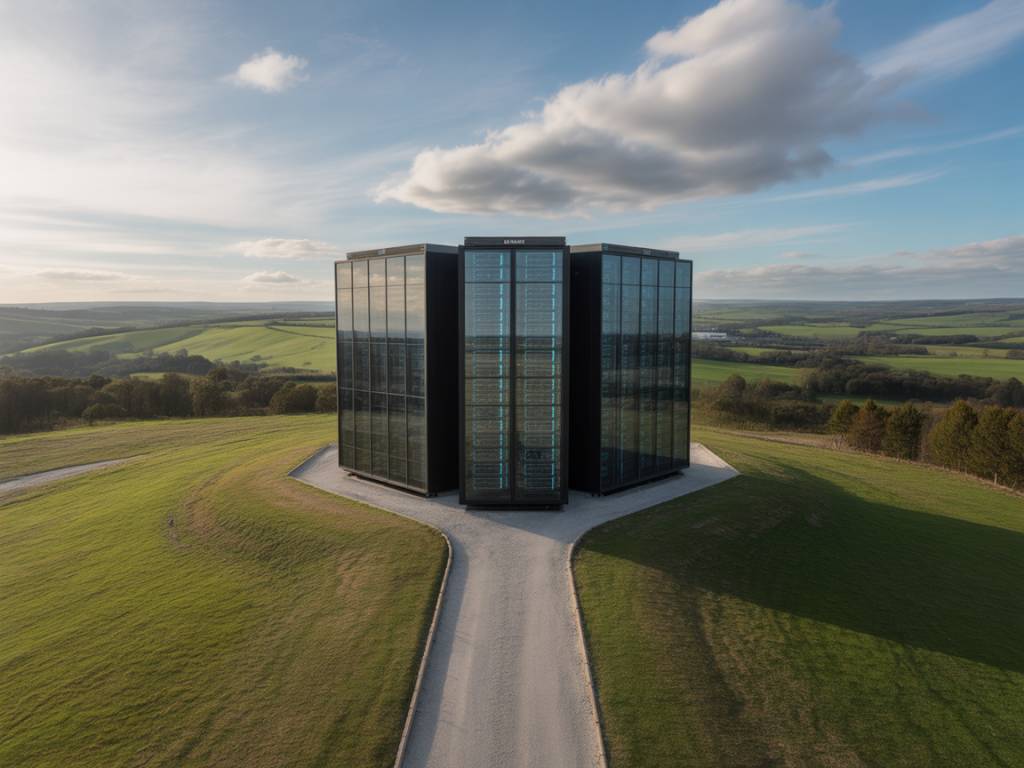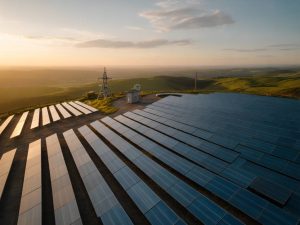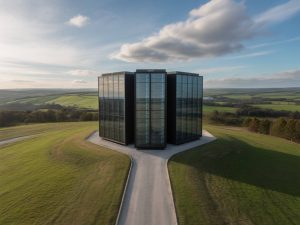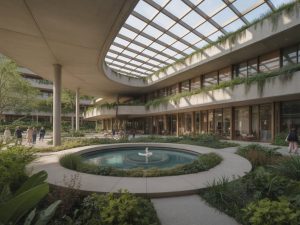The Growing Energy Demand of Data Centers
As the backbone of the modern digital economy, data centers have become indispensable. From cloud computing and video streaming to financial transactions and artificial intelligence, data centers power a significant portion of today’s global infrastructure. However, this central role also comes with a growing energy footprint. According to the International Energy Agency (IEA), data centers worldwide consumed around 200 terawatt-hours (TWh) in 2020—about 1% of global electricity demand—and this figure continues to rise.
This intensifying demand for electricity underscores the urgency of adopting sustainable energy solutions. As stakeholders—from hyperscale data center operators to local governments—grapple with the environmental impact of digital services, renewable energy has emerged as a viable path forward to make data infrastructure more eco-friendly and efficient.
Renewable Energy: A Strategic Solution
Harnessing renewable energy sources presents a practical and scalable solution to the rising energy needs of data centers. Solar, wind, hydro, and geothermal power are increasingly being incorporated into energy strategies to reduce carbon emissions and optimize long-term operational costs. Unlike fossil fuels, these clean energy sources can be harvested sustainably without depleting natural resources or contributing to greenhouse gas emissions.
Several tech giants, including Google, Microsoft, and Amazon Web Services (AWS), have committed to running their data centers on 100% renewable energy. These companies not only aim to reduce their carbon footprints but also to encourage industry-wide adoption by demonstrating the economic and environmental advantages of renewable sourcing.
Technologies Driving the Shift
Transitioning to renewable-powered data centers involves both upstream and downstream innovations. On the supply side, the declining cost of solar panels, wind turbines, and battery storage technologies has made renewable energy more accessible. On the demand side, advancements in energy-efficient hardware, AI-powered cooling systems, and modular data center design help to manage energy usage more effectively.
Some of the key technologies enabling this shift include:
- Photovoltaic (PV) Systems: Solar panels installed on-site or sourced from off-site solar farms provide a reliable and silent way to generate electricity directly on the premises.
- Wind Power Integration: Long-term Power Purchase Agreements (PPAs) with wind farms give data centers predictable pricing structures and strong sustainability credentials.
- Battery Energy Storage Systems (BESS): These systems store excess energy generated by renewable sources and release it during periods of high demand or low generation, ensuring continuity and reliability.
- Advanced Cooling Techniques: Free-air cooling, liquid immersion cooling, and AI-optimized temperature controls reduce energy loads traditionally required for temperature regulation.
The Role of Power Purchase Agreements
One of the most effective ways data centers are procuring renewable energy is through Power Purchase Agreements (PPAs). These are long-term contracts between energy producers and consumers that guarantee a fixed purchase of renewable electricity at agreed-upon prices. PPAs help renewable energy developers secure financing while allowing data centers to lock in stable-cost energy, reducing exposure to market volatility.
Through virtual and physical PPAs, data center operators can support the construction of new wind and solar farms, even if those renewable facilities are located off-site. This mechanism not only enhances the renewable capacity on the local grid but also aligns corporate energy strategies with sustainability goals.
Geographical Placement and Renewable Synergy
The location of data centers plays a crucial role in determining the viability and efficiency of renewable energy integration. Areas with abundant sunshine, strong wind currents, or geothermal activity offer natural advantages for clean energy generation. For instance, Iceland has become a popular location for data centers due to its access to geothermal and hydroelectric power combined with naturally cool temperatures that reduce cooling energy demand.
By strategically situating facilities in regions rich in renewable resources, companies can minimize transmission losses and capitalize on local incentives or regulations promoting green energy. This approach not only enhances environmental performance but also ensures energy resiliency in the face of growing consumption.
Challenges in Scaling Renewable Energy
While the transition to renewable-powered data centers is accelerating, several challenges still exist. Intermittency remains a primary concern. Unlike fossil fuels, solar and wind energy cannot generate electricity on demand without adequate storage solutions. Grid limitations and regulatory complexities can also hinder integration, especially in regions with outdated or inflexible energy infrastructures.
Moreover, achieving 24/7 clean energy availability—not just annual net-zero metrics—is a growing focus but remains technically demanding. Companies are now exploring time-matched renewable energy procurement, which ensures the continuous use of clean power throughout the day and year. This approach requires advanced energy analytics, demand response tools, and grid collaboration, underscoring the complexity of sustainable operations at scale.
Environmental and Economic Benefits
Despite these challenges, the benefits of renewable energy in powering data centers are multifaceted. From reducing greenhouse gas emissions and air pollution to lowering long-term operational costs, clean energy offers both environmental and economic returns. Additionally, companies embracing renewables often enhance their brand value and meet stakeholder expectations for corporate responsibility.
Employing renewable energy solutions can lead to:
- Lower Carbon Footprint: Reducing reliance on fossil fuels directly lowers emissions associated with electricity use.
- Operational Savings: After initial investments, renewable energy, especially solar and wind, offers low marginal costs and long-term price stability.
- Energy Independence: On-site generation allows for greater control over energy supply and reduces dependency on volatile utility rates.
- Regulatory Compliance: As governments tighten environmental regulations, renewables help companies meet and exceed these standards.
A Path Toward Sustainable Digital Infrastructure
As the digital age progresses, the energy needs of data centers are set to rise steadily. To future-proof their operations and contribute to environmental goals, data center operators must continue innovating and investing in renewable energy. Through a mix of technological advancement, strategic partnerships, and regulatory alignment, the industry has the tools it needs to transition toward a more sustainable model.
Renewable energy is no longer a niche consideration but a core component of responsible data center planning. As global attention shifts to sustainability and climate impact, leveraging clean energy sources will be indispensable for aligning the expansion of digital infrastructure with the principles of environmental stewardship.






More Stories
L’essor des communautés énergétiques locales : vers une nouvelle gouvernance citoyenne de l’énergie
Integrating Biophilic Design with Green Technology: A New Paradigm for Sustainable Living
How virtual reality is transforming modern manufacturing processes